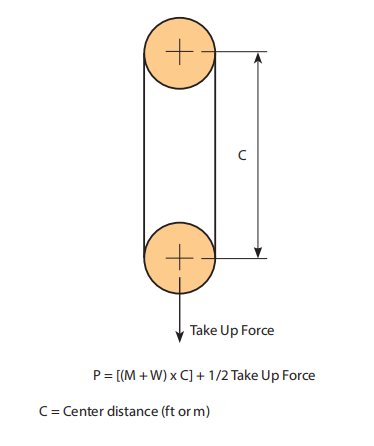Introduction
A cautious assessment of the problems surrounding a conveyor is critical for accurate conveyor  chain choice. This area discusses the basic considerations required for prosperous conveyor chain choice. Roller Chains are sometimes made use of for light to moderate duty materials handling applications. Environmental disorders may demand the use of unique materials, platings coatings, lubricants or even the capacity to operate without the need of extra external lubrication.
chain choice. This area discusses the basic considerations required for prosperous conveyor chain choice. Roller Chains are sometimes made use of for light to moderate duty materials handling applications. Environmental disorders may demand the use of unique materials, platings coatings, lubricants or even the capacity to operate without the need of extra external lubrication.
Primary Information and facts Expected For Chain Selection
? Type of chain conveyor (unit or bulk) including the approach of conveyance (attachments, buckets, by rods and so forth).
? Conveyor layout including sprocket places, inclines (if any) and the variety of chain strands (N) to get employed.
? Amount of materials (M in lbs/ft or kN/m) and type of materials to get conveyed.
? Estimated excess weight of conveyor elements (W in lbs/ft or kN/m) like chain, slats or attachments (if any).
? Linear chain pace (S in ft/min or m/min).
? Environment during which the chain will operate which includes temperature, corrosion circumstance, lubrication situation and so on.
Phase 1: Estimate Chain Tension
Make use of the formula beneath to estimate the conveyor Pull (Pest) after which the chain tension (Check). Pest = (M + W) x f x SF and
Test = Pest / N
f = Coefficient of Friction
SF = Speed Issue
Stage 2: Produce a Tentative Chain Choice
Employing the Check worth, create a tentative variety by picking a chain
whose rated working load higher than the calculated Test worth.These values are suitable for conveyor services and are diff erent from these proven in tables in the front on the catalog which are linked to slow velocity drive chain usage.
Moreover to suffi cient load carrying capacity normally these chains needs to be of a specific pitch to accommodate a wanted attachment spacing. For example if slats are to get bolted to an attachment every one.5 inches, the pitch of your chain selected have to divide into 1.5?¡À. Thus 1 could use a 40 chain (1/2?¡À pitch) with all the attachments just about every 3rd, a 60 chain (3/4?¡À pitch) together with the attachments just about every 2nd, a 120 chain (1-1/2?¡À pitch) together with the attachments each and every pitch or even a C2060H chain (1-1/2?¡À pitch) with all the attachments each pitch.
Stage 3: Finalize Assortment – Determine Real Conveyor Pull
Immediately after creating a tentative variety we need to verify it by calculating
the real chain stress (T). To complete this we ought to fi rst determine the actual conveyor pull (P). From the layouts proven over the proper side of this web page pick out the appropriate formula and calculate the complete conveyor pull. Note that some conveyors might be a blend of horizontal, inclined and vertical . . . in that case determine the conveyor Pull at each area and include them collectively.
Step four: Calculate Greatest Chain Tension
The maximum Chain Tension (T) equals the Conveyor Pull (P) as calculated in Stage three divided by the number of strands carrying the load (N), times the Pace Component (SF) proven in Table 2, the Multi-Strand Aspect (MSF) proven in Table 3 as well as the Temperature Issue (TF) shown in Table 4.
T = (P / N) x MSF x SF x TF
Phase five: Test the ?¡ãRated Working Load?¡À with the Picked Chain
The ?¡ãRated Doing work Load?¡À from the picked chain really should be greater compared to the Greatest Chain Stress (T) calculated in Step four above. These values are proper for conveyor service and therefore are diff erent from those shown in tables with the front of the catalog which are related to slow velocity drive chain utilization.
Phase 6: Examine the ?¡ãAllowable Roller Load?¡À with the Selected Chain
For chains that roll about the chain rollers or on leading roller attachments it truly is necessary to verify the Allowable Roller Load?¡À.
Note: the Roller load is determined by:
Roller Load = Wr / Nr
Wr = The complete fat carried by the rollers
Nr = The number of rollers supporting the bodyweight.